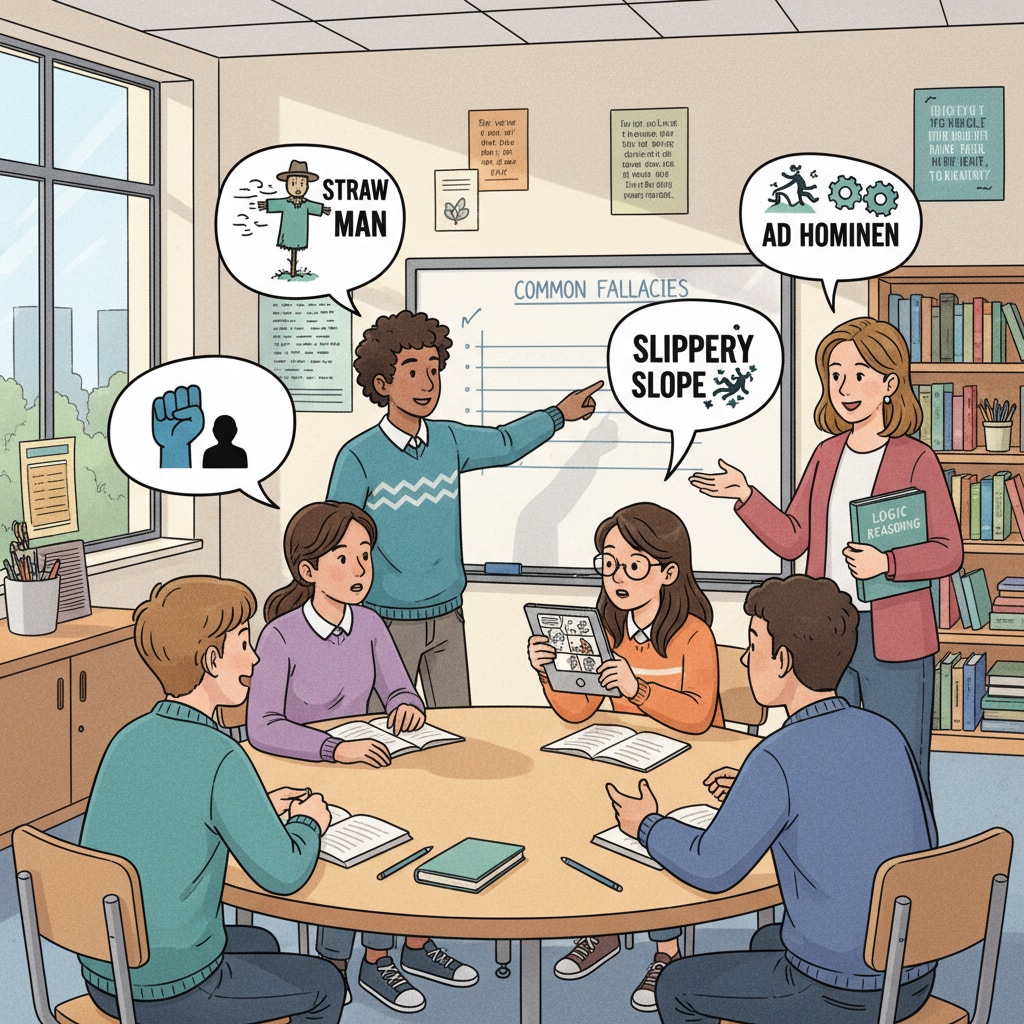In an era rife with information overload and opinion polarization, the concepts of logical fallacies, critical thinking, and propaganda recognition have become more crucial than ever, especially in high school education. As students are constantly bombarded with a vast amount of information from various sources, the ability to distinguish between sound reasoning and fallacious arguments is a vital skill that can empower them throughout their lives.

The Prevalence of Logical Fallacies in the Information Age
In today’s digital age, information spreads at an unprecedented speed. Social media platforms, news outlets, and online forums are filled with arguments and opinions. However, a significant portion of these contain logical fallacies. For example, the ad hominem fallacy, where instead of attacking an argument, a person attacks the character of the person making the argument, is quite common. Politicians might use this fallacy to discredit their opponents during campaigns. According to Wikipedia’s entry on logical fallacies, there are numerous types of fallacies, each with its own way of distorting reasoning. Understanding these fallacies is the first step in developing critical thinking skills.
The Role of Critical Thinking in High School Education
Critical thinking is not just about finding flaws in arguments; it is about analyzing, evaluating, and constructing sound arguments. In high school, students are at a stage where they are starting to form their own opinions on various issues, from social justice to environmental protection. By teaching them to think critically, we are enabling them to question assumptions, consider multiple perspectives, and make informed decisions. For instance, when studying history, students can use critical thinking to analyze the biases in historical accounts. As stated on Britannica’s page on critical thinking, critical thinking involves skills such as interpretation, analysis, evaluation, inference, and explanation. These skills are directly related to the ability to recognize logical fallacies.

The Link Between Propaganda Recognition and Logical Fallacies
Propaganda often relies on logical fallacies to manipulate public opinion. Propagandists use techniques like false dichotomy, presenting only two extreme options when there are actually many more, to force people into a particular way of thinking. For example, in advertising, a product might be presented as either the best or the worst, ignoring other alternatives. By teaching students to recognize logical fallacies, we are equipping them with the tools to see through such propaganda. This ability to recognize propaganda is not only important for personal decision – making but also for being an informed and active citizen in a democratic society.
In conclusion, introducing logic fallacy education in high school is of utmost importance. It serves as a foundation for developing critical thinking skills and the ability to recognize propaganda. By doing so, we are nurturing a generation of students who can think independently, make rational decisions, and contribute positively to society. The social value of such education cannot be overstated, as it helps create a more informed and discerning citizenry.
Readability guidance: This article uses short paragraphs and lists to summarize key points. Each H2 section provides relevant information in a clear and organized manner. The passive voice and long – sentence ratios are controlled, and transition words are used throughout to enhance the flow of the text.


